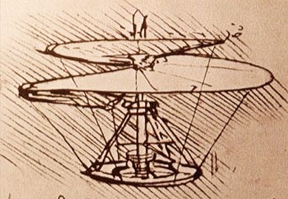- Establish at least 3 non-related solutions to a problem before proceeding to developing any one solution.
In contrast, only having one solution and proceeding with it cuts-off other ideas and can easily lead to less than a great solution (sub-optimization, low-Aptness). Having two solutions tends to lead to either-or, this-or-that type of thinking which degrades into the one solution focus.
Having three seems to allow for some type of a Compare & Contrast thinking activity as well as other things that are best unfolded using examples. Four or more solutions is OK but doesn't seem to bring proportionately more value to the process, and is usually too much for my little brain to handle.
The rule can and should be applied to any-portion or any level of the solution during the brainstorming process. The restriction of non-related is subjective and a part of this learned skill.
Here is a simplistic example for starters: I want to build a deck on the back of my house. I want something innovative, not just another variation of the same old thing.
Three non-related solutions at the highest level:
Cement deck
Wood deck
Stone deck
Compare and Contrast these 3 solutions and you get: wood-grain-imprinted cement, stone-imprinted cement, or wood arranged like stone. Would you agree that these are innovative solutions?
Let's suppose that the wood post idea is something that I would like to use for a 10 ft long pathway out to a different area of the yard. Now I need to innovate how to "manufacture" or build that pathway.
General Criteria: needs to be level for walking, needs to allow for water drainage (no standing puddles). Needs to look good (like the picture). Assume the walkway can be straight, without a curve.
Applying the rule of 3:
Solution #1: Build an upside-down Mosaic. Cut wood into roughly 4 inch long pieces, set the flat, clean-cut pieces surface onto a level surface. Arrange "artistically". Put some duct-tape along the outside to hold everything together. Pour some sand down between the cracks to a depth of about 1". Pour some very liquid cement into the cracks to bind it all together. Once the cement is cured, flip over and remove the sand.
Solution #2: Brick and Mortar Style. Start with wood that is roughly 10" to 12" long. Set the wood onto a flat surface and begin to build a pile (visualize stacking firewood). Artistically arrange small diameter wood with larger wood to minimize void areas (like the picture above) While doing this process, use cement to bind the pieces together, but apply cement only in two strips, one about 2" back from one end of the wood, and the other 2" back from the other end (like railroad tracks). Build a rectangle the height that will equal the width of your pathway. Once cement is set, use a large chainsaw to cut flat the two ends, and cut the pile in half, between the two strips of cement. Result, two flat sheets.
Solution #3: Pile Driver. Cut wood into roughly 4 to 6 inch pieces. Dig trench in yard where path is desired. Create dams at intervals in the trench. Pour soupy cement (or soupy clay with cement) into the trench between two dams and begin to push the wood down into the cement in an artistic manner. Use a 2 x 8 plank of wood to press the wood down to achieve a level walking surface. Careful not to overfill with cement since you don't want the cement all the way to the top. Use garden hose to rinse away excess.
End of example.
As you have read through the three solutions you may have found faults with all or parts of each, and there are indeed faults with aspects of each solution. Also as you read through each, you likely came up with another solution, or different ways to do a step in one of the solutions. This is how the Rule of 3 works.
More on this topic to come.

